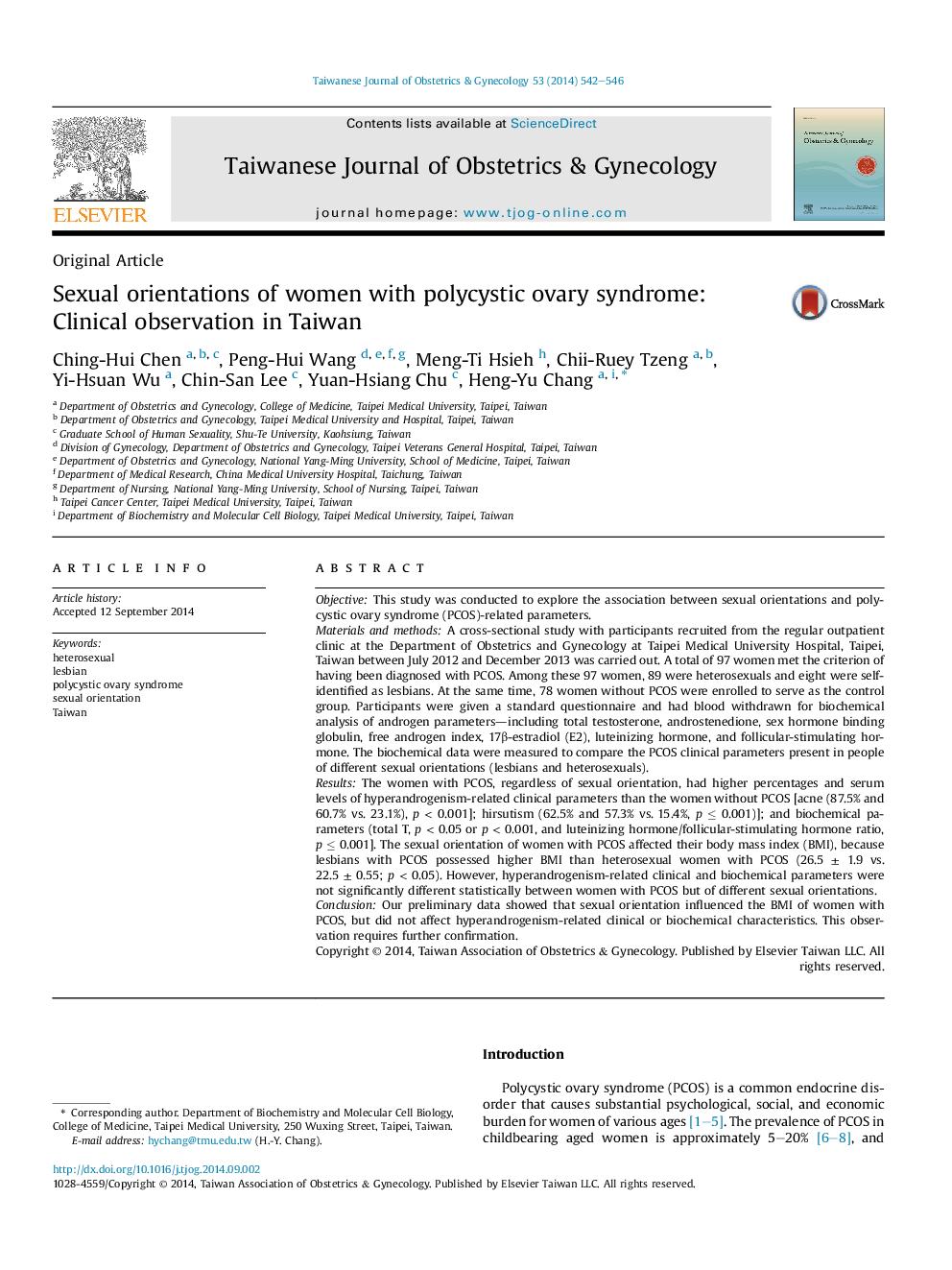| کد مقاله | کد نشریه | سال انتشار | مقاله انگلیسی | نسخه تمام متن |
|---|---|---|---|---|
| 3974953 | 1600975 | 2014 | 5 صفحه PDF | دانلود رایگان |
ObjectiveThis study was conducted to explore the association between sexual orientations and polycystic ovary syndrome (PCOS)-related parameters.Materials and methodsA cross-sectional study with participants recruited from the regular outpatient clinic at the Department of Obstetrics and Gynecology at Taipei Medical University Hospital, Taipei, Taiwan between July 2012 and December 2013 was carried out. A total of 97 women met the criterion of having been diagnosed with PCOS. Among these 97 women, 89 were heterosexuals and eight were self-identified as lesbians. At the same time, 78 women without PCOS were enrolled to serve as the control group. Participants were given a standard questionnaire and had blood withdrawn for biochemical analysis of androgen parameters—including total testosterone, androstenedione, sex hormone binding globulin, free androgen index, 17β-estradiol (E2), luteinizing hormone, and follicular-stimulating hormone. The biochemical data were measured to compare the PCOS clinical parameters present in people of different sexual orientations (lesbians and heterosexuals).ResultsThe women with PCOS, regardless of sexual orientation, had higher percentages and serum levels of hyperandrogenism-related clinical parameters than the women without PCOS [acne (87.5% and 60.7% vs. 23.1%), p < 0.001]; hirsutism (62.5% and 57.3% vs. 15.4%, p ≤ 0.001)]; and biochemical parameters (total T, p < 0.05 or p < 0.001, and luteinizing hormone/follicular-stimulating hormone ratio, p ≤ 0.001]. The sexual orientation of women with PCOS affected their body mass index (BMI), because lesbians with PCOS possessed higher BMI than heterosexual women with PCOS (26.5 ± 1.9 vs. 22.5 ± 0.55; p < 0.05). However, hyperandrogenism-related clinical and biochemical parameters were not significantly different statistically between women with PCOS but of different sexual orientations.ConclusionOur preliminary data showed that sexual orientation influenced the BMI of women with PCOS, but did not affect hyperandrogenism-related clinical or biochemical characteristics. This observation requires further confirmation.
Journal: Taiwanese Journal of Obstetrics and Gynecology - Volume 53, Issue 4, December 2014, Pages 542–546
